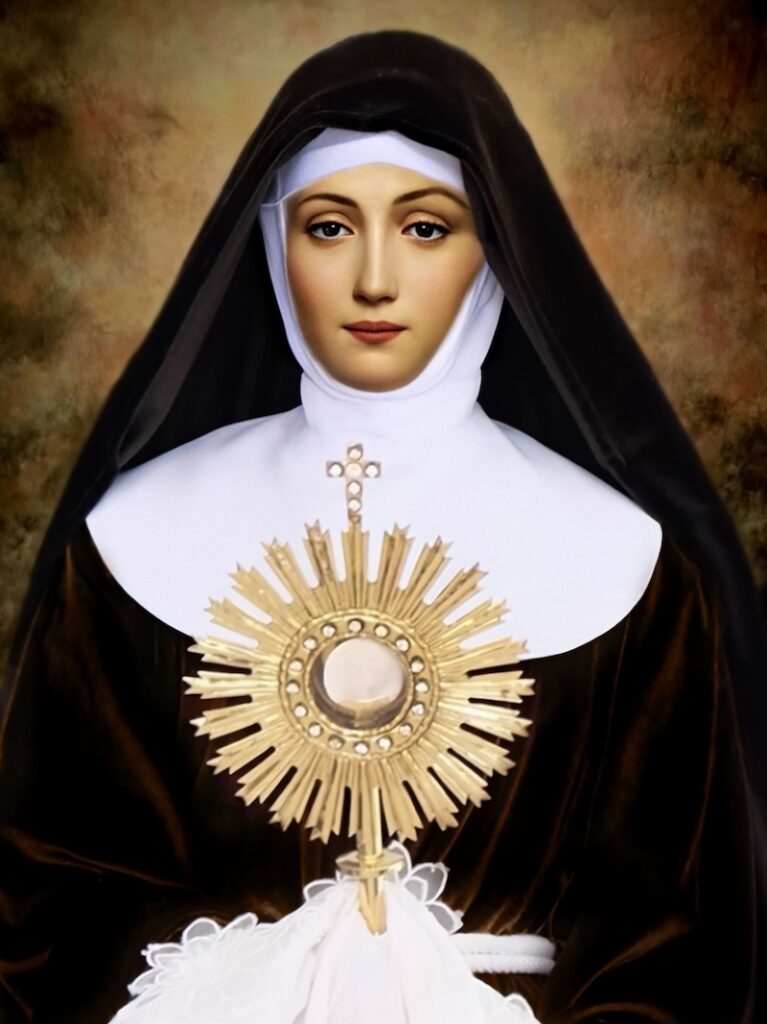 Our Patron Saint – Saint Clare of Assisi
Our Patron Saint – Saint Clare of Assisi
Born: July 16 1194 at Assisi, Italy
Died: August 11 1253 of natural causes
Canonized: 26 September 1255 by Pope Alexander IV
St. Clare was born in Assisi, Italy, in 1193 to wealthy parents, and was taught to read and write as well as spin yarn and do needlework. She had little interest in her luxurious surroundings (she lived in a palace), and influenced by her mother’s religious devotion, Clare dedicated her life to God at an early age. She also showed early on that her calling would involve helping the poor, as she set aside food from her family table to give to the needy on the streets.
When Clare was 18, Francis of Assisi came to preach in the church of San Giorgio at Assisi. Inspired by his words, Clare asked Francis to help her in dedicating her life to God, and he vowed to do so. The following year (1211), Clare’s parents chose a wealthy young man for Clare to marry, but she pointedly refused, fleeing soon after for the Porziuncola Chapel, where Francis received her. She took vows dedicating her life to God, and that moment, occurring on March 20, 1212, marked the beginning of the Second Order of St. Francis.
Clare’s sister Agnes soon joined her, and they moved to the Church of San Damiano, recently rebuilt by Francis. It wasn’t long before other women joined them, and San Damiano’s residents, known for their ascetic lifestyle, became known as the “Poor Ladies.” (Known as the Order of San Damiano, 10 years after Clare’s death the order would be renamed the Order of Saint Clare.)
Clare became the abbess of San Damiano in 1216, and, while spending her days doing manual labor and praying, she began dedicating much of her time to changing the governing rule (established by the pope) of the order from the Benedictine spirit to one of the newly established Franciscan rule. (Two days before Clare died, Pope Innocent IV finally approved her request.) The order became known for its life of abject poverty and committed life of prayer, prayer that Clare used to attain worldly victories that are credited with saving Assisi on two occasions.
Clare loved music and well-composed sermons. She was humble, merciful, charming, optimistic, chivalrous, and every day she meditated on the Passion of Jesus. She would get up late at night to tuck in her sisters who’d kicked off their blankets. When she learned of the Franciscan martyrs in Morocco in 1221, she tried to go there to give her own life for God, but was restrained. Once when her convent was about to be attacked, she displayed the Sacrament in a monstrance at the convent gates, and prayed before it; the attackers left, the house was saved, and the image of her holding a monstrance became one of her emblems. Her patronage of eyes and against their problems may have developed from her name which has overtones from clearness, brightness, brilliance – like healthy eyes. Toward the end of her life, when she was too ill to attend Mass, an image of the service would display on the wall of her cell; thus her patronage of television. She was ever the close friend and spiritual student of Francis, who apparently led her soul into the light at her death.
